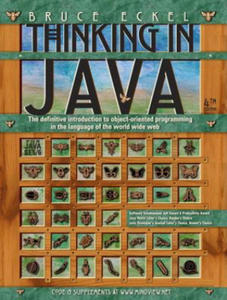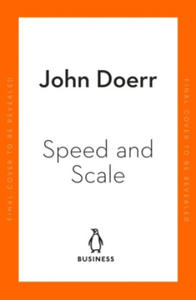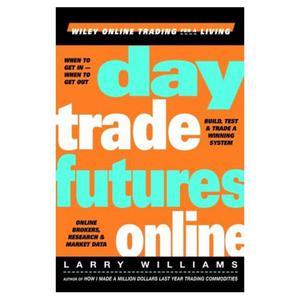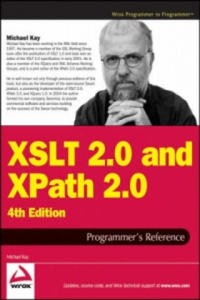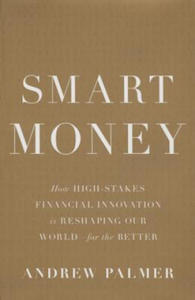ibook net good books
- znaleziono 6 produktów w 3 sklepach
Thinking in Java Pearson Education
Książki / Literatura obcojęzyczna
"Thinking in Java should be read cover to cover by every Java programmer, then kept close at hand for frequent reference. The exercises are challenging, and the chapter on Collections is superb! Not only did this book help me to pass the Sun Certified Java Programmer exam; it's also the first book I turn to whenever I have a Java question." -Jim Pleger, Loudoun County (Virginia) Government"Much better than any other Java book I've seen. Make that 'by an order of magnitude'...Very complete, with excellent right-to-the-point examples and intelligent, not dumbed-down, explanations...In contrast to many other Java books I found it to be unusually mature, consistent, intellectually honest, well-written, and precise. IMHO, an ideal book for studying Java." -Anatoly Vorobey, Technion University, Haifa, Israel"Absolutely one of the best programming tutorials I've seen for any language." -Joakim Ziegler, FIX sysop"Thank you again for your awesome book. I was really floundering (being a non-C programmer), but your book has brought me up to speed as fast as I could read it.It's really cool to be able to understand the underlying principles and concepts from the start, rather than having to try to build that conceptual model through trial and error. Hopefully I will be able to attend your seminar in the not-too-distant future." -Randall R. Hawley, automation technician, Eli Lilly & Co."This is one of the best books I've read about a programming language...The best book ever written on Java." -Ravindra Pai, Oracle Corporation, SUNOS product line"Bruce, your book is wonderful! Your explanations are clear and direct. Through your fantastic book I have gained a tremendous amount of Java knowledge. The exercises are also fantastic and do an excellent job reinforcing the ideas explained throughout the chapters. I look forward to reading more books written by you. Thank you for the tremendous service that you are providing by writing such great books. My code will be much better after reading Thinking in Java. I thank you and I'm sure any programmers who will have to maintain my code are also grateful to you." -Yvonne Watkins, Java artisan, Discover Technologies, Inc."Other books cover the what of Java (describing the syntax and the libraries) or the how of Java (practical programming examples). Thinking in Java is the only book I know that explains the why of Java: Why it was designed the way it was, why it works the way it does, why it sometimes doesn't work, why it's better than C++, why it's not. Although it also does a good job of teaching the what and how of the language, Thinking in Java is definitely the thinking person's choice in a Java book." -Robert S. StephensonAwards for Thinking in Java2003 Software Development Magazine Jolt Award for Best Book 2003 Java Developer's Journal Reader's Choice Award for Best Book 2001 JavaWorld Editor's Choice Award for Best Book 2000 JavaWorld Reader's Choice Award for Best Book 1999 Software Development Magazine Productivity Award 1998 Java Developer's Journal Editor's Choice Award for Best Book Thinking in Java has earned raves from programmers worldwide for its extraordinary clarity, careful organization, and small, direct programming examples. From the fundamentals of Java syntax to its most advanced features, Thinking in Java is designed to teach, one simple step at a time.* The classic object-oriented introduction for beginners and experts alike, fully updated for Java SE5/6 with many new examples and chapters! * Test framework shows program output. * Design patterns are shown with multiple examples throughout: Adapter, Bridge, Chain of Responsibility, Command, Decorator, Facade, Factory Method, Flyweight, Iterator, Data Transfer Object, Null Object, Proxy, Singleton, State, Strategy, Template Method, and Visitor. * Introduction to XML for data transfer; SWT, Flash for user interfaces. * Completely rewritten concurrency chapter gives you a solid grasp of threading fundamentals. *500+ working Java programs in 700+ compiling files, rewritten for this edition and Java SE5/6. * Companion web site includes all source code, annotated solution guide, weblog, and multimedia seminars. * Thorough coverage of fundamentals; demonstrates advanced topics. * Explains sound object-oriented principles. *Hands-On Java Seminar CD available online, with full multimedia seminar by Bruce Eckel. * Live seminars, consulting, and reviews available. See www.MindView.net Download seven free sample chapters from Thinking in Java, Fourth Edition. Visit http://mindview.net/Books/TIJ4.
Sklep: Libristo.pl
Speed & Scale Penguin Books
Książki / Literatura obcojęzyczna
#1 bestselling author and acclaimed venture capitalist John Doerr reveals a sweeping action plan to conquer humanity's greatest challenge: climate change.In 2006, John Doerr was moved by Al Gore's An Inconvenient Truth and a challenge from his teenage daughter: "Dad, your generation created this problem. You better fix it." Since then, Doerr has searched for solutions to this existential problem-as an investor, an advocate and a philanthropist. Fifteen years later, despite breakthroughs in batteries, electric vehicles, plant-based proteins and solar and wind power, global warming continues to get worse. Its impact is all around us: droughts, floods, wildfires, the melting of the polar ice caps. Our world is squarely in a climate crisis and on the brink of a climate disaster. Yet despite our state of emergency, climate change has yet to be tackled with the urgency and ambition it demands. More than ever, we need a clear course of action. Fueled by a powerful tool called Objectives and Key Results (OKRs), SPEED & SCALE offers an unprecedented global plan to cut greenhouse gas emissions before it's too late. Used by Google, Bono's ONE foundation and thousands of startups the world over, OKRs have scaled ideas into achievements that changed the world. With clear-eyed realism and an engineer's precision, Doerr identifies the measurable OKRs we need to reduce emissions across the board and to arrive by 2050 at net zero-the point where we are no longer adding to the heat-trapping carbon in the atmosphere.By turns pragmatic and inspiring, SPEED & SCALE intersperses Doerr's wide-ranging analysis with firsthand accounts from Jeff Bezos, Christiana Figueres, Al Gore, Mary Barra, Bill Gates, and other intrepid policy leaders, entrepreneurs, scientists and activists. This book is a launchpad for leaders of all kind, for anyone anywhere who can move others to act with them. With a definitive action plan, the latest science and a rising climate movement on our side, we can still reach net zero before it is too late. But as Doerr reminds us, there is no more time to waste.________________'A critical blueprint for anyone looking to take concrete steps to reach net-zero emissions.' Al Gore, former U.S. Vice President'A practical guide for both public and private sector participation in decarbonizing the global economy, a task as challenging as it is urgent.' Christiana Figueres, former executive secretary of the UN Climate Change Convention'A comprehensive plan to tackle one of the most vexing challenges in human history.' Jim Collins, author of Good to Great and Built to Last
Sklep: Libristo.pl
Day Trade Futures Online (Wiley Online Trading for a Living) Larry Williams
Literatura anglojęzyczna
Podana cena książki jest orientacyjna, zależy od kilku czynników. Po zakupie obsługa sklepu skontaktuje się, jeśli konieczna będzie dopłata. Book Description Wiley Online Trading for a Living When to get in-when to get out Build, test & trade a winning system Online brokers, research & market data For those who are well suited to day trading and short-term trading, the futures market is one of the best games in town. As the original short-term vehicle, the futures market allows the trader to collapse the time frame in which he or she can reach the desired profit target-or pain threshold. As a result, wins and losses are compounded much more quickly than in stock trading-and, in the case of wins, often more profitably. The ability to gain leverage with very little on margin gives you, the trader, the ability to earn more off smaller swings. And enough home runs could allow you to become your own boss, work from home in your bathrobe, or even work from your cell phone while lying on the beach. So far, so good. But what does it take to win? In Day Trade Futures Online, award-winning veteran futures trader Larry Williams gives a no-holds-barred view of the risks and rewards of this increasingly accessible arena. His straightforward approach to helping you determine your trading personality is the first step. Then he offers traders what they really need: strategies and tactics designed to beat the futures markets. From hardware and software setup to trading psychology and successful strategizing, this highly readable book covers all the bases needed to prepare you to trade online, including: - Assessing your risk threshold - Streamlining the glut of trading and price information to make it work for you - The importance of knowing how to manage your money - Choosing an online broker and utilizing other online resources, such as news, chat rooms, and message boards - When to get out of your trades - Building a system based on Larry's time-tested strategies . . . and that's just for starters. Also included are an appendix of basic futures concepts and a select bibliography of some of the best learning resources. With good humor and brutal honesty, Williams guides you in building the trading system that will work best for you. GET IN ON THE ORIGINAL SHORT-TERM GAME WITH BIG-TIME PROFITS With unflinching honesty and decades of trading experience, award-winning veteran futures trader Larry Williams lends his expertise to the many aspects of futures trading online, including: - Winning strategies - Determining your trading personality - The art of using the Internet - Hardware and software solutions - History and development of short-term trading Praise for Larry Williams and day trade futures online "Larry Williams, the astute and experienced trader, has presented the reader with many computer-tested patterns that should give one an edge up in the hard world of day trading. He not only gives the patterns, he explains the 'why' of market action and what it takes to be successful from a psychological and money management standpoint. This is one of the best practical books ever written on trading by a veteran trader. Buy it."-John Hill, President, Futures Truth Co. "Larry possesses an incredible talent to differentiate between what is important in life as well as in the markets. In his book, he shares insights into market behavior and short-term price dynamics that are useful to beginning and experienced traders alike. Whereas most day trading books merely discuss the market in generalities, Larry focuses on computer-tested techniques that can actually help make traders profitable. This is Larry at his best and finest!"-Tom DeMark, President, Market Studies Inc., author of New Science of Technical Analysis and New Market Timing Techniques "Day Trade Futures Online is another must-have Larry Williams trading book. That's because nearly all the profitable futures traders I've known have attributed their trading success to an idea or concept learned from Larry. When Larry speaks, you better listen."-Gary Smith, author of How I Trade for a Living About the Autor LARRY WILLIAMS is the all-time winner of the Robbins World Cup Championship in Futures Trading where he turned $10,000 into $1,100,000 in twelve months-mostly by day trading. His newsletter has consistently been in the Commodity Traders Consumer Report''s top five in their total net profit category. He has been profiled in Barron's, the Wall Street Journal, Forbes, Fortune, and countless other publications. His other books include Long-Term Secrets to Short-Term Trading (Wiley).
Sklep: Maklerska.pl
XSLT 2.0 and XPath 2.0 Programmer's Reference 4e John Wiley & Sons Inc
Książki / Literatura obcojęzyczna
This book is primarily a practical reference book for professional XSLT developers. It assumes no previous knowledge of the language, and many developers have used it as their first introduction to XSLT; however, it is not structured as a tutorial, and there are other books on XSLT that provide a gentler approach for beginners. The book does assume a basic knowledge of XML, HTML, and the architecture of the Web, and it is written for experienced programmers. There's no assumption that you know any particular language such as Java or Visual Basic, just that you recognize the concepts that all programming languages have in common. The book is suitable both for XSLT 1.0 users upgrading to XSLT 2.0, and for newcomers to XSLT. The book is also equally suitable whether you work in the Java or .NET world. As befits a reference book, a key aim is that the coverage should be comprehensive and authoritative. It is designed to give you all the details, not just an overview of the 20 percent of the language that most people use 80 percent of the time.It's designed so that you will keep coming back to the book whenever you encounter new and challenging programming tasks, not as a book that you skim quickly and then leave on the shelf. If you like detail, you will enjoy this book; if not, you probably won't. But as well as giving the detail, this book aims to explain the concepts, in some depth. It's therefore a book for people who not only want to use the language but who also want to understand it at a deep level. The book aims to tell you everything you need to know about the XSLT 2.0 language. It gives equal weight to the things that are new in XSLT 2.0 and the things that were already present in version 1.0. The book is about the language, not about specific products. However, there are appendices about Saxon (the author's own implementation of XSLT 2.0), about the Altova XSLT 2.0 implementation, and about the Java and Microsoft APIs for controlling XSLT transformations, which will no doubt be upgraded to handle XSLT 2.0 as well as 1.0. A third XSLT 2.0 processor, Gestalt, was released shortly before the book went to press, too late to describe it in any detail. But the experience of XSLT 1.0 is that there has been a very high level of interoperability between different XSLT processors, and if you can use one of them, then you can use them all.In the previous edition we split XSLT 2.0 and XPath 2.0 into separate volumes. The idea was that some readers might be interested in XPath alone. However, many bought the XSLT 2.0 book without its XPath companion and were left confused as a result; so this time, the material is back together. The XPath reference information is in self-contained chapters, so it should still be accessible when you use XPath in contexts other than XSLT. The book does not cover XSL Formatting Objects, a big subject in its own right. Nor does it cover XML Schemas in any detail. If you want to use these important technologies in conjunction with XSLT, there are other books that do them justice. This book contains twenty chapters and eight appendixes (the last of which is a glossary) organized into four parts. The following section outlines what you can find in each part, chapter, and appendix. Part I: Foundations: The first part of the book covers essential concepts. You should read these before you start coding.If you ignore this advice, as most people do, then you read them when you get to that trough of despair when you find it impossible to make the language do anything but the most trivial tasks. XSLT is different from other languages, and to make it work for you, you need to understand how it was designed to be used. Chapter 1: XSLT in Context: This chapter explains how XSLT fits into the big picture: how the language came into being and how it sits alongside other technologies. It also has a few simple coding examples to keep you alert. Chapter 2: The XSLT Processing Model: This is about the architecture of an XSLT processor: the inputs, the outputs, and the data model. Understanding the data model is perhaps the most important thing that distinguishes an XSLT expert from an amateur; it may seem like information that you can't use immediately, but it's knowledge that will stop you making a lot of stupid mistakes. Chapter 3: Stylesheet Structure: XSLT development is about writing stylesheets, and this chapter takes a bird's eye view of what stylesheets look like.It explains the key concepts of rule-based programming using templates, and explains how to undertake programming-in-the-large by structuring your application using modules and pipelines. Chapter 4: Stylesheets and Schemas: A key innovation in XSLT 2.0 is that stylesheets can take advantage of knowledge about the structure of your input and output documents, provided in the form of an XML Schema. This chapter provides a quick overview of XML Schema to describe its impact on XSLT development. Not everyone uses schemas, and you can skip this chapter if you fall into that category. Chapter 5: The Type System: XPath 2.0 and XSLT 2.0 offer strong typing as an alternative to the weak typing approach of the 1.0 languages. This means that you can declare the types of your variables, functions, and parameters, and use this information to get early warning of programming errors. This chapter explains the data types available and the mechanisms for creating user-defined types. Part II: XSLT and XPath Reference: This section of the book contains reference material, organized in the hope that you can easily find what you need when you need it.It's not designed for sequential reading, though you might well want to leaf through the pages to discover what's there. Chapter 6: XSLT Elements: This monster chapter lists all the XSLT elements you can use in a stylesheet, in alphabetical order, giving detailed rules for the syntax and semantics of each element, advice on usage, and examples. This is probably the part of the book you will use most frequently as you become an expert XSLT user. It's a "no stone unturned" approach, based on the belief that as a professional developer you need to know what happens when the going gets tough, not just when the wind is in your direction. Chapter 7: XPath Fundamentals: This chapter explains the basics of XPath: the low-level constructs such as literals, variables, and function calls. It also explains the context rules, which describe how the evaluation of XPath expressions depends on the XSLT processing context in which they appear. Chapter 8: XPath: Operators on Items: XPath offers the usual range of operators for performing arithmetic, boolean comparison, and the like.However, these don't always behave exactly as you would expect, so it's worth reading this chapter to see what's available and how it differs from the last language that you used. Chapter 9: XPath: Path Expressions: Path expressions are what make XPath special; they enable you to navigate around the structure of an XML document. This chapter explains the syntax of path expressions, the 13 axes that you can use to locate the nodes that you need, and associated operators such as union, intersection, and difference. Chapter 10: XPath: Sequence Expressions: Unlike XPath 1.0, in version 2.0 all values are sequences (singletons are just a special case). Some of the most important operators in XPath 2.0 are those that manipulate sequences, notably the "for" expression, which translates one sequence into another by applying a mapping. Chapter 11: XPath: Type Expressions: The type system was explained in Chapter 5; this chapter explains the operations that you can use to take advantage of types. This includes the "cast" operation which is used to convert values from one type to another.A big part of this chapter is devoted to the detailed rules for how these conversions are done.Chapter 12: XSLT Patterns: This chapter returns from XPath to a subject that's specific to XSLT. Patterns are used to define template rules, the essence of XSLT's rule-based programming approach. The reason for explaining them now is that the syntax and semantics of patterns depends strongly on the corresponding rules for XPath expressions. Chapter 13: The Function Library: XPath 2.0 includes a library of functions that can be called from any XPath expression; XSLT 2.0 extends this with some additional functions that are available only when XPath is used within XSLT. The library has grown immensely since XPath 1.0. This chapter provides a single alphabetical reference for all these functions. Chapter 14: Regular Expressions: Processing of text is an area where XSLT 2.0 and XPath 2.0 are much more powerful than version 1.0, and this is largely through the use of constructs that exploit regular expressions. If you're familiar with regexes from languages such as Perl, this chapter tells you how XPath regular expressions differ. If you're new to the subject, it explains it from first principles.Chapter 15: Serialization: Serialization in XSLT means the ability to generate a textual XML document from the tree structure that's manipulated by a stylesheet. This isn't part of XSLT processing proper, so (following W3C's lead) it's separated it into its own chapter. You can control serialization from the stylesheet using an declaration, but many products also allow you to control it directly via an API. Part III: Exploitation: The final section of the book is advice and guidance on how to take advantage of XSLT to write real applications. It's intended to make you not just a competent XSLT coder, but a competent designer too. The best way of learning is by studying the work of others, so the emphasis here is on practical case studies. Chapter 16: Extensibility: This chapter describes the "hooks" provided in the XSLT specification to allow vendors and users to plug in extra functionality. The way this works will vary from one implementation to another, so we can't cover all possibilities, but one important aspect that the chapter does cover is how to use such extensions and still keep your code portable.Chapter 17: Stylesheet Design Patterns: This chapter explores a number of design and coding patterns for XSLT programming, starting with the simplest "fill-in-the-blanks" stylesheet, and extending to the full use of recursive programming in the functional programming style, which is needed to tackle problems of any computational complexity. This provides an opportunity to explain the thinking behind functional programming and the change in mindset needed to take full advantage of this style of development. Chapter 18: Case Study: XMLSpec: XSLT is often used for rendering documents, so where better to look for a case study than the stylesheets used by the W3C to render the XML and XSLT specifications, and others in the same family, for display on the web? The resulting stylesheets are typical of those you will find in any publishing organization that uses XML to develop a series of documents with a compatible look-and-feel. Chapter 19: Case Study: A Family Tree: Displaying a family tree is another typical XSLT application.This example with semi-structured data-a mixture of fairly complex data and narrative text-that can be presented in many different ways for different audiences. It also shows how to tackle another typical XSLT problem, conversion of the data into XML from a legacy text-based format. As it happens, this uses nearly all the important new XSLT 2.0 features in one short stylesheet. But another aim of this chapter is to show a collection of stylesheets doing different jobs as part of a complete application. Chapter 20: Case Study: Knight's Tour: Finding a route around a chessboard where a knight visits every square without ever retracing its steps might sound a fairly esoteric application for XSLT, but it's a good way of showing how even the most complex of algorithms are within the capabilities of the language. You may not need to tackle this particular problem, but if you want to construct an SVG diagram showing progress against your project plan, then the problems won't be that dissimilar. Part IV: Appendices: A ppendix A: XPath 2.0 Syntax Summary: Collects the XPath grammar rules and operator precedences into one place for ease of reference.Appendix B: Error Codes: A list of all the error codes defined in the XSLT and XPath language specifications, with brief explanations to help you understand what's gone wrong. Appendix C: Backward Compatibility: The list of things you need to look out for when converting applications from XSLT 1.0. Appendix D: Microsoft XSLT Processors: Although the two Microsoft XSLT processors don't yet support XSLT 2.0, we thought many readers would find it useful to have a quick summary here of the main objects and methods used in their APIs. Appendix E: JAXP: the Java API for XML Processing: JAXP is an interface rather than a product. Again, it doesn't have explicit support yet for XSLT 2.0, but Java programmers will often be using it in XSLT 2.0 projects, so the book includes an overview of the classes and methods available. Appendix F: Saxon: At the time of writing Saxon (developed by the author of this book) provides the most comprehensive implementation of XSLT 2.0 and XPath 2.0, so its interfaces and extensions are covered in some detail. Appendix G: Altova: Altova, the developers of XML Spy, have an XSLT 2.0 processor that can be used either as part of the development environment or as a freestanding component.This appendix gives details of its interfaces. Appendix H: Glossary Note: CD-ROM/DVD and other supplementary materials are not included as part of eBook file.
Sklep: Libristo.pl
Wi-Fi Home Networking McGraw-Hill
Medycyna > English Division
This book: describes the costs, benefits and necessity of networking; reviews software networking tools that save money for small-time operators; summarizes business expenses and savings to help a prospective user choose their office setup; offers criteria for deciding on distribution media; compares wireless versus wired connections; and includes important, practical information about security, viruses, and backing up. Booking a new career Ojai man, laid off after 25 years by Verizon, becomes author By Roger Harris, harris@insidevc.com For 18 months, Ray Smith had way too much time to smell the pink and red roses growing in his Ojai back yard. Like thousands of other telecommunications workers across the country who were laid off by struggling telecom companies, Smith was out of work. A veteran network engineer with more than 25 years of experience, Smith hated being jobless. He looked for work constantly after being let go by Verizon Communications in January 2001. He made a million phone calls and knocked on a like number of doors. Or so it seemed. Too often he heard the words that every 50-something job hunter learns to hate: "You're overqualified." No nibbles. No offers. "I was desperate," said Smith, 55. So with his back to the wall, Smith tried something new -- he wrote a book. Other than the Christmas letters he writes instead of sending cards, Smith was a novice writer. But he knows computer networking. With the help of a good editor and his patient and supportive wife, Jade, he began writing last June. Six months later, Smith delivered the last pages of WiFi Home Networking to his publisher. In the process, he rediscovered himself and put those pesky out-of-work blues into the closet. Seeing his book on the shelf at Barnes & Noble for the first time was "an out-of-body experience almost," Smith said. "Suddenly, I was somebody again." His book was published by McGraw Hill, one of the largest publishing houses in the country. The 347-page book details how to build a wireless network for your home. WiFi is short for "wireless fidelity," the radio frequency technology used to connect computers. Step by step, Smith outlines everything from the history of WiFi and the benefits of a wireless network to choosing the right equipment and setting up the network. The book, which sells for $29.95 and includes a CD version, is aimed primarily at small-office/home-office users. There are several advantages of a wireless network, said Smith, who found in researching the book that more than 20 million U.S. households have more than one computer. With a WiFi home network, several computers can share the same high-speed wireless Internet connection and the same printer. If you have a laptop computer, you can work anywhere in the house or even the back yard -- because there are no wires to trip over. Wireless networks make it easy to share files between computers and remotely control one computer with another computer. And, homeowners don't have to knock holes in walls like they would when running cable for a wired network. Smith said a wireless network makes working from home easier and more productive. Real estate agents, for example, can connect a WiFi camera to their computer and show out-of-town home buyers photos of houses, and a salesperson could sit in their home office and use the technology to video conference with field engineers. How it happened In the last few months, interest in wireless networking has taken off. In addition to being a useful tool for home offices, wireless networks are cropping up in coffee shops, airports and hotels. "Ray has a real knack of seeing things before they become popular," said Jade, who works for Verizon's DSL division. "... A lot of families have more than one computer, and (WiFi) is a way to get them to talk to each other. It's the next logical step." Although Smith never wrote a book before, his longtime friend David Leathers, a Videography magazine editor and president of Eye Square Productions, a video and film production company in Culver City, didn't hesitate to recommend Smith when McGraw-Hill was looking for a WiFi writer. "I knew he knew the subject matter because he had been directly involved in it a very long time," said Leathers, who has written technical books for McGraw-Hill. "I've not been particularly impressed with some of the technical writing I see. Some of it looks like somebody took some downloads from the Net, some press releases and rescrambled it and then called it an article. But I knew Ray would take it seriously and do original work on it." Smith's serious work-ethic impressed his editor at McGraw-Hill. "He did a great job of researching and getting enough information from the vendors," said Judy Bass, senior editor with McGraw-Hill. Smith accepted criticism without complaint and quickly learned the style preferred by McGraw-Hill's Professional Book Group, which publishes hundreds of titles a year. "He really went out and learned about the market and in the process marketed himself really well," Bass said. Unlike many how-to technical books, Smith writes in a manner understandable by both novices and tech-savvy readers. The book is sprinkled with interesting tidbits. For instance, the first wireless communication was in 1880 when Alexander Graham Bell invented the photophone, which used a beam of light to carry a voice message between buildings in Washington, D.C. The Ventura County Star 20030608
Sklep: Ksiazki-medyczne.eu
Smart Money Basic Books
Książki / Literatura obcojęzyczna
Six years after the financial crisis, investment bankers remain villains in the public mind. But as "Economist" editor Andrew Palmer reveals in "Smart Money," this vilified industry is capable of doing great good for society. In this sweeping account of the history, present, and future of financial innovation, Palmer argues that we need bankers today more than ever before. From social-impact bonds that fund safety net programs for the homeless to human-capital contracts that send lower-class youth to college, and from start-ups that invest in cancer research to financial products that encourage people to save more money for retirement, bankers are building better lives for people across the world--and across the income spectrum. While acknowledging the role of complex financial products in causing the Great Recession, Palmer convincingly argues that the financial sector is the nevertheless the source of surprisingly effective solutions to the most intractable problems of the twenty-first century.
Sklep: Libristo.pl
Sklepy zlokalizowane w miastach: Warszawa, Kraków, Łódź, Wrocław, Poznań, Gdańsk, Szczecin, Bydgoszcz, Lublin, Katowice
Szukaj w sklepach lub całym serwisie
1. Sklepy z ibook net pl good books
2. Szukaj na wszystkich stronach serwisu
t1=0.022, t2=0, t3=0, t4=0.017, t=0.023

